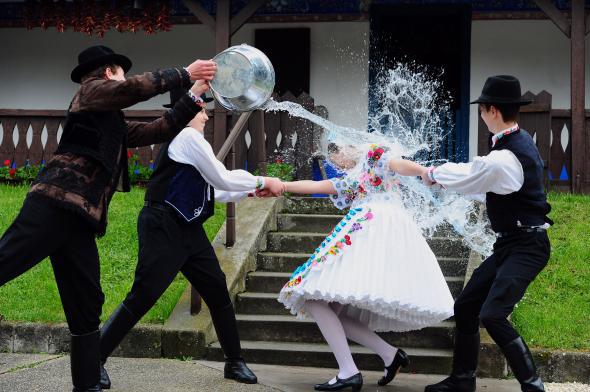This post originally appeared on Strong Language, a sweary blog about swearing.
Can we get cooties from a cooter? Etymologically? No.
But if you do get cooties from a cooter, there’s a good chance they’ll be crabs.
Cooties was the term members of the military used in World War I to refer to the body lice that ravaged the soldiers, compounding the misery of the trenches and transmitting diseases like typhus. Some etymologists have proposed that this sense of cooties came from kutu, the word for louse in Malay and Maori, but it most likely came from cooty, a British regionalism meaning “infested with lice” and referring originally to coots—waterfowl (such as auks)—that were perceived as dirty and teeming with parasites. This sense of coot is quite old, coming from the Middle English cote, and the Oxford English Dictionary has a citation of “as lousy as a coot” from 1864.
When soldiers went home at the end of the war, they took with them their cooties despite concerted delousing efforts, and the word entered general parlance, accounting for the spike in usage around 1920:
Although this sense has stuck around in some regions, by the mid-20th century, North American children had co-opted the word to mean an imaginary germ carried by other kids, usually of the opposite sex. The Oxford English Dictionary’s first citation of this sense is from Eleanor Estes’ 1951 book Ginger Pye—“All the boys and girls in Grade Five said Addie Egan had cooties and she really did not have cooties at all.” And the OED acknowledges that this quote could be transitional from the earlier, lousy sense.

Photo by Attila Kisbenedek/AFP/Getty Images
Cooter, in contrast, is much newer. Besides being the name of a Dukes of Hazzard character and city in Missouri, cooter has only in the last few decades taken on the meaning of female genitalia. People in the southern United States, beginning with black Americans in the early 1800s, use cooter to refer to a few species of box turtles and tortoises. The word may have come from kuta, meaning turtle to the Bambara and Malinke people of West Africa. Snapping turtle began to be used in the South as a eurotophobic euphemism for vagina, and cooter eventually took on the same meaning, probably beginning in the mid-’70s, although the earliest citation for this usage in Connie Eble’s dictionary of campus slang is from 1986. In the same dictionary, cooter is also said to mean a female—“cooter madness: girl crazy”—a cite from 1977.
Interestingly, according to the OED, “to coot” is an intransitive verb (now obsolete) referring to the copulation of tortoises:
The Tortoises … coot for fourteen daies together (Philosophical Transactions of the Royal Society of London, 1667).
The temporal and geographical distance makes a relationship between to coot and cooter improbable, but it’s quite the coincidence.
A few other euphemisms for female genitals start with the [ku] sound: coochie came from the hootchy-kootchy, an erotic dance from the late 19th century, giving us the shortened cooch, from the mid-20th century. Cooze and coozie (related to, and sometimes used with, floozie) have also been used to describe a promiscuous woman or her genitals. (Beer koozies, although also “sheaths,” are allegedly just a distortion of cozy. I’ll let you draw your own conclusions.) Cooter, cooch, coozie—are all of these [ku] cunts coincidental, or might they suggest a phonaestheme?
Neither the OED nor Merriam-Webster lists the vagina sense of cooter, but the latter does list the breast sense of hooter, which seems to be roughly the same age but has a much more transparent etymology: car horns, being things that hoot, are hooters, and car horns look vaguely like breasts.
In the early 1970s, hooters was mostly still innuendo. When Ted Tally (who went on to win an Academy Award for the screenplay of The Silence of the Lambs) wrote a two-act play called Hooters in 1978 about two 19-year-old males who try to pick up a couple of slightly older women over a weekend in Cape Cod, reviewers at the time still felt the need to define the term. By the time Hooters restaurants were launched in 1983, the word was pretty well skunked and had lost all subtlety.
According to Green’s Dictionary of Slang, people in the 1980s also used hooter to refer to a woman with large breasts, much as they used cooter and coozie to talk about both a woman and a part of her body. These are examples of synecdoche, a figure of speech in which a part is used to refer to a whole. This particular brand of synecdoche, which many consider sexist, happens with tedious regularity—for instance, when people talk about “chasing pussy” or “getting some sweet ass.” (Synecdoche for general insults like dick, asshole, and cunt is related but not quite the same). So if you reduce a woman to no more than a cooter and some hooters, don’t be surprised if she snaps back and makes some noise. She’s got etymology on her side.